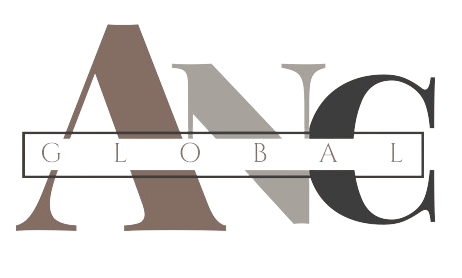Recruitment Bias and the Hidden Challenges in Hiring
Recruitment is the cornerstone of any organization’s success. Yet, bias during the hiring process can hinder diversity, inclusivity, and the ability to find the best talent. “Recruitment bias” refers to the prejudices and stereotypes that affect hiring decisions, often unconsciously. This blog delves into the types of recruitment bias, their impact, and how organizations can overcome these challenges to build a more equitable workplace.
Understanding Recruitment Bias

Recruitment bias occurs when subjective factors influence hiring decisions. These biases can be unconscious or deliberate, but both lead to unfair outcomes. Recognizing and mitigating these biases is essential for creating a truly meritocratic hiring process.
Types of Recruitment Bias
1. Affinity Bias
This bias occurs when recruiters favor candidates with similar backgrounds, interests, or experiences. For example, a recruiter might lean toward a candidate who attended the same university or shares similar hobbies.
Learn More: Know Your Capability (KYC)
2. Gender Bias
Gender bias can manifest in job descriptions, interviews, or evaluations. Words like “assertive” or “dominant” in job ads may unintentionally discourage female applicants.
Related Resource: ANC Global Gender Sensitization Programs
3. Confirmation Bias
Recruiters may form an opinion about a candidate based on initial impressions and then seek information to confirm their assumptions, ignoring contradictory evidence.
4. Age Bias
Candidates might face discrimination based on their age, with younger applicants perceived as inexperienced and older ones viewed as outdated.
Explore Solutions: Talent Management and Development Framework
The Impact of Recruitment Bias
Recruitment bias doesn’t just affect candidates—it also impacts organizational performance, culture, and reputation.
1. Stifled Diversity
Biases can prevent diverse candidates from being hired, limiting the range of perspectives within teams. Research from McKinsey shows that companies with diverse workforces perform better financially.
2. Reduced Employee Engagement
When employees perceive bias in hiring practices, trust and morale decline. This can lead to higher turnover rates and reduced productivity.
3. Missed Talent Opportunities
Organizations risk losing out on highly qualified candidates by focusing on subjective criteria rather than skills and potential.
Further Reading: The Profound Impact of Employee Engagement

How to Identify Recruitment Bias
1. Analyzing Hiring Data
Use recruitment analytics to uncover patterns that suggest bias. For instance, track the diversity of your candidate pool and the demographics of those hired.
Relevant Tool: ANC Global XE Tools
2. Reviewing Job Descriptions
Ensure that job descriptions use inclusive language. Tools like Textio can help identify and eliminate gender-coded language.
3. Conducting Bias Training
Train hiring managers to recognize and counteract their biases. Workshops on unconscious bias can be instrumental in fostering equitable hiring practices.
Discover More: Career and Development Framework (CDF)
Strategies to Overcome Recruitment Bias
1. Standardizing Interviews
Structured interviews with a consistent set of questions help reduce subjectivity. Ensure all candidates are evaluated based on the same criteria.
Additional Insights: ANC Global’s Assessment, Restructures, and Right-Sizing Centers (ARC)
2. Leveraging AI in Recruitment
AI-powered tools can screen resumes without bias. However, it’s crucial to ensure these tools are free from algorithmic biases.
Learn More: Building an HR Chatbot
3. Blind Recruitment
Remove identifying information such as names, photos, and addresses from resumes to focus solely on qualifications and skills.
4. Diverse Interview Panels
Incorporate people from varied backgrounds into the interview panel to bring multiple perspectives to the hiring process.
Explore Our Offerings: Succession and Bench Assessments (SABA)
HR’s Role in Addressing Recruitment Bias
Human Resources plays a critical role in ensuring fairness and equity in recruitment processes. Here’s how HR can lead the charge:
1. Policy Development
Establish clear policies on diversity, equity, and inclusion (DEI). Outline specific steps to reduce bias at every stage of recruitment.
Relevant Offering: Employee Mental Health and Psychological Safety
2. Monitoring and Accountability
Regularly audit recruitment practices and hold hiring managers accountable for promoting diversity.
3. Leveraging DEI Programs
Implement targeted DEI initiatives to attract underrepresented groups. Partnerships with organizations that support diverse talent pools can be highly effective.
Discover More: Emiratisation Programs
Case Studies: Tackling Recruitment Bias
1. Google’s Efforts to Reduce Bias
Google has implemented unconscious bias training for its employees and uses structured interview processes to minimize bias. Learn more on their Diversity and Inclusion page.
2. Microsoft’s Inclusive Hiring Initiatives
Microsoft focuses on inclusive hiring practices, including targeted recruitment for neurodiverse candidates. Their Inclusive Hiring Program provides insights into their strategies.
How ANC Global Can Empower Your Business

At ANC Global, we specialize in helping founders, CEOs, and HR managers tackle their HR challenges in recruitment bias with tailored solutions that drive results. Here’s how we can support your business:
- Custom HR Strategies: From recruitment to employee engagement, we design HR strategies that align with your specific needs. (ANC Global DEI Solutions)
- Compliance Expertise: Our team ensures your business stays compliant with labor laws, mitigating risks and protecting your reputation.
- Leadership Development: We provide tools and guidance to help you build a strong leadership team that inspires and drives performance. Explore our Leadership Assessment Framework (LAF).
- Cost-Effective Solutions: Our consultative approach empowers you with best practices and tools, allowing you to implement sustainable HR solutions without breaking the bank.
Conclusion
Recruitment bias remains a significant challenge in today’s hiring landscape, but organizations can overcome it by adopting data-driven, inclusive, and transparent practices. By addressing biases head-on, companies can build diverse teams that drive innovation and growth.
Ready to transform your hiring process? Contact ANC Global for tailored HR solutions: Get in Touch
Explore More from Our Services
Explore More from Our Insights
- Imposter Syndrome: Why Women in Startups Might Hold Back
- Pay Parity and Its Effects on the Global Economic Crisis
- Why Middle Managers Make or Break Organizations
- Unseen Struggles: How Microaggressions Shape Workplace Experience
- Harnessing Collective Intelligence for Transformational Change
- Adaptive Leadership: Navigating a Dynamic Symphony
- Saudi Arabia Surges Ahead in MENA Venture Capital
Table of Contents
Reach Our Global Consultants
- Employee Disengagement: Your Fault or the General Environment’s?
- How to Develop a Strategic Workforce Plan: A Guide for HR Directors
- How Your Head of HR Helps the CEO Win: The Strategic Edge No One Talks About
- Is AI Killing Creativity in your employees?
- Top 3 Issues on the Minds of MENA Board Directors in 2025
